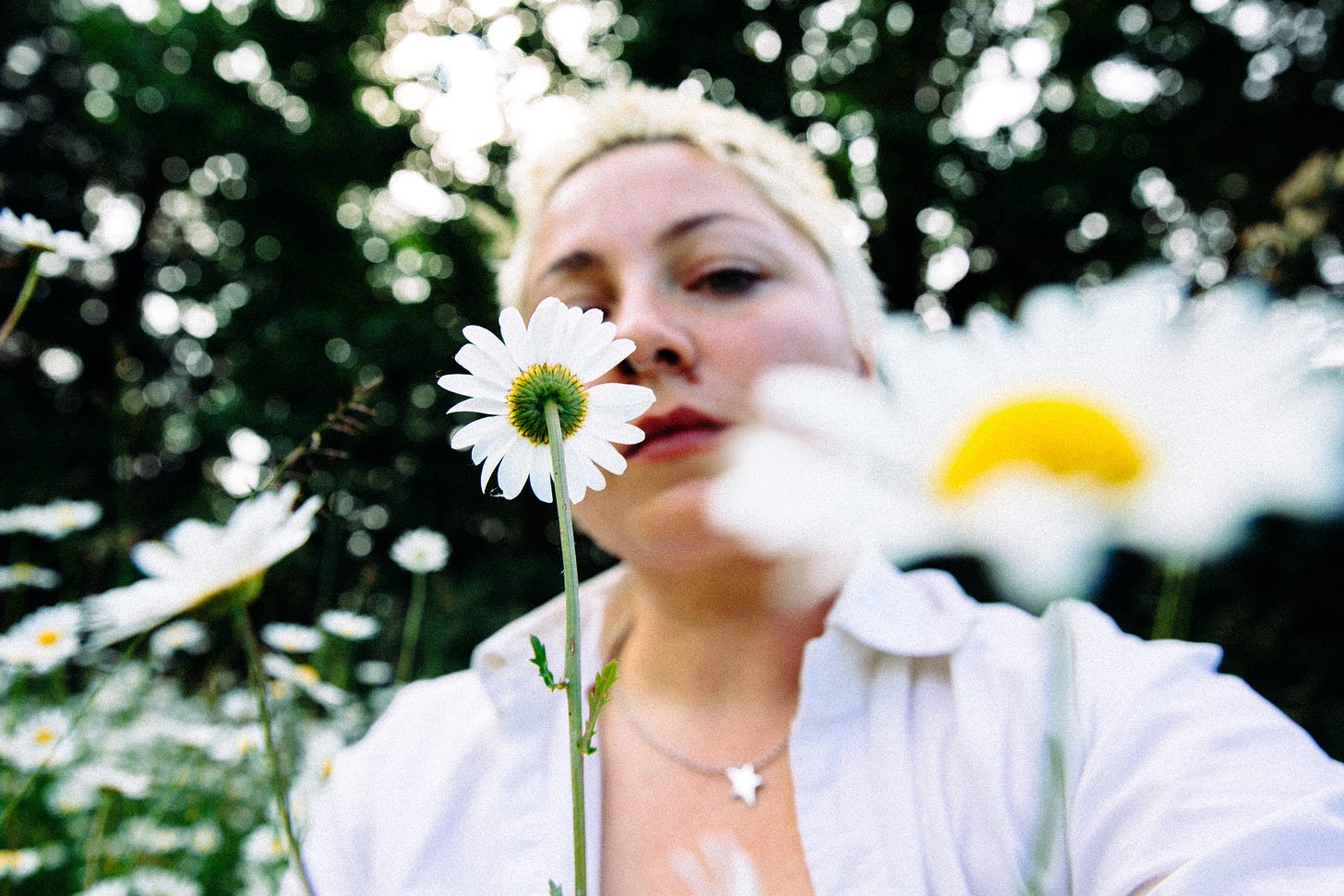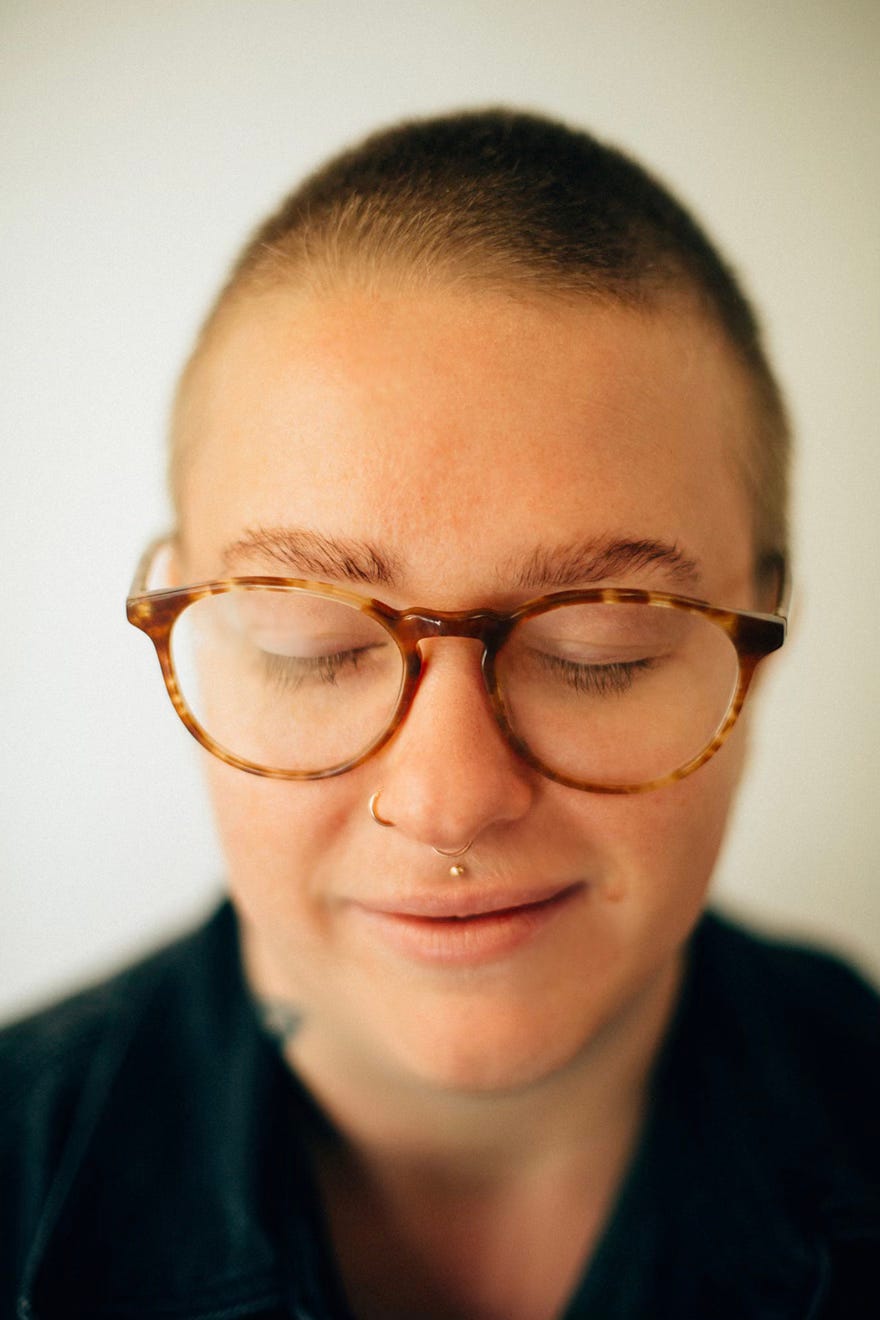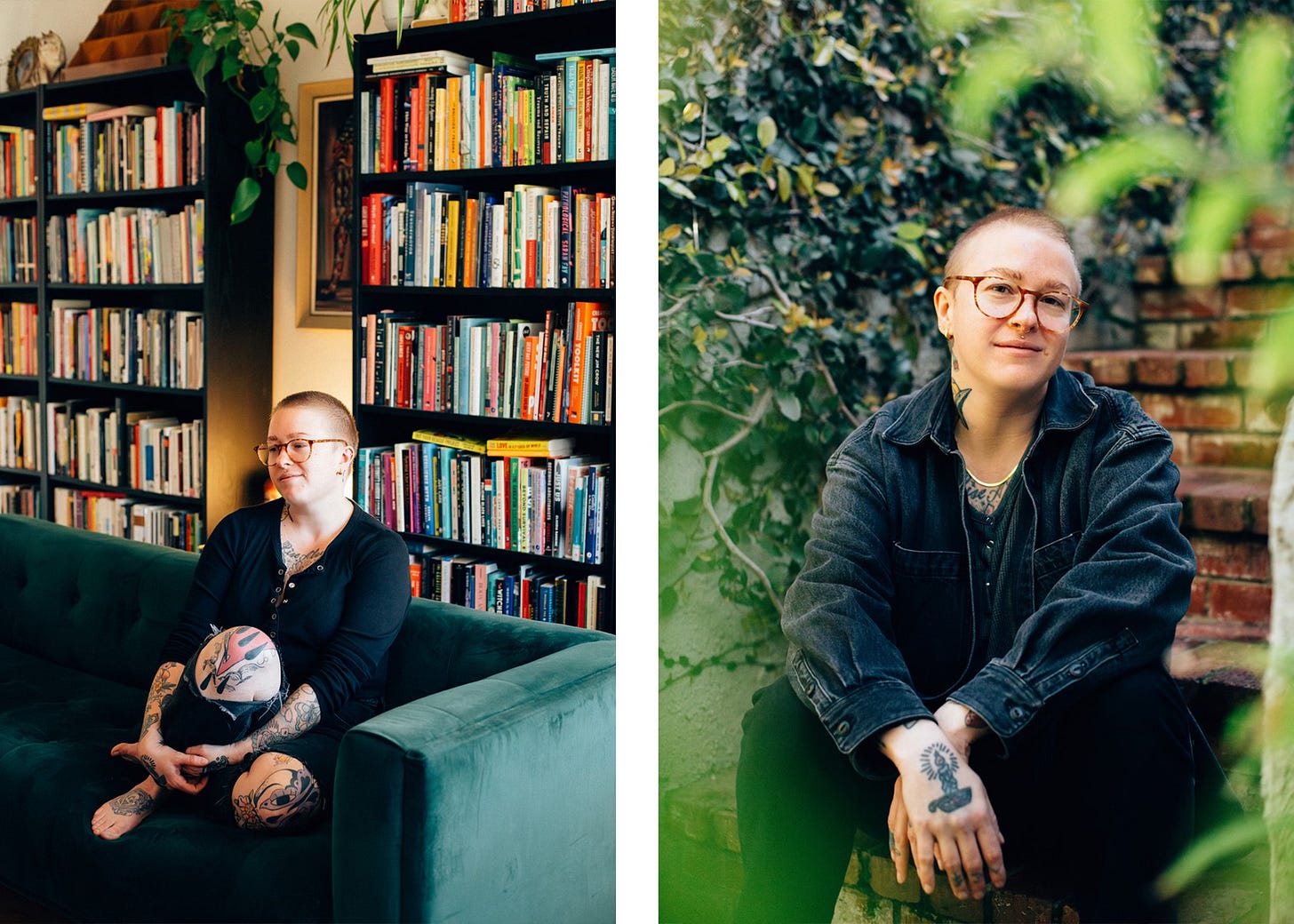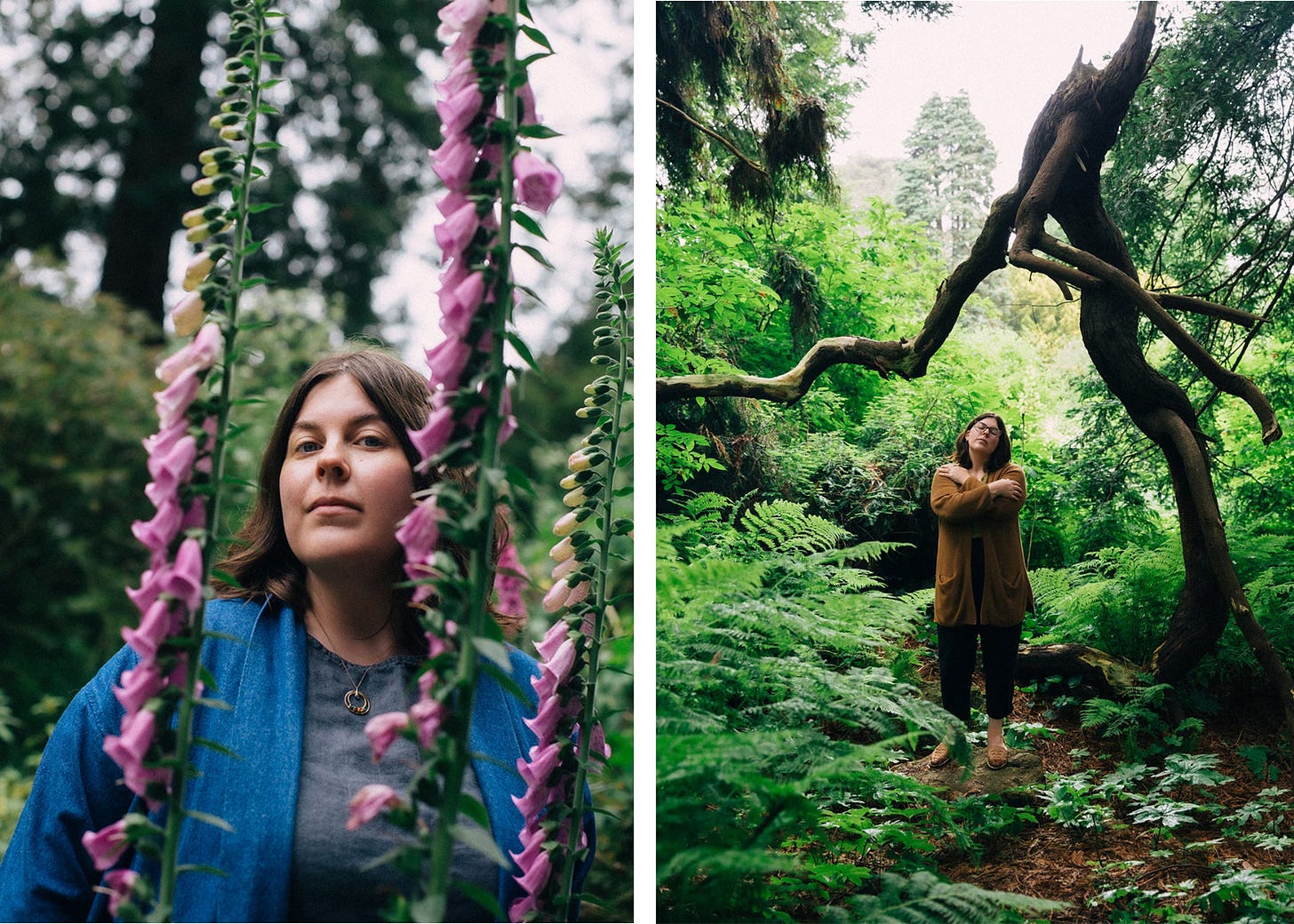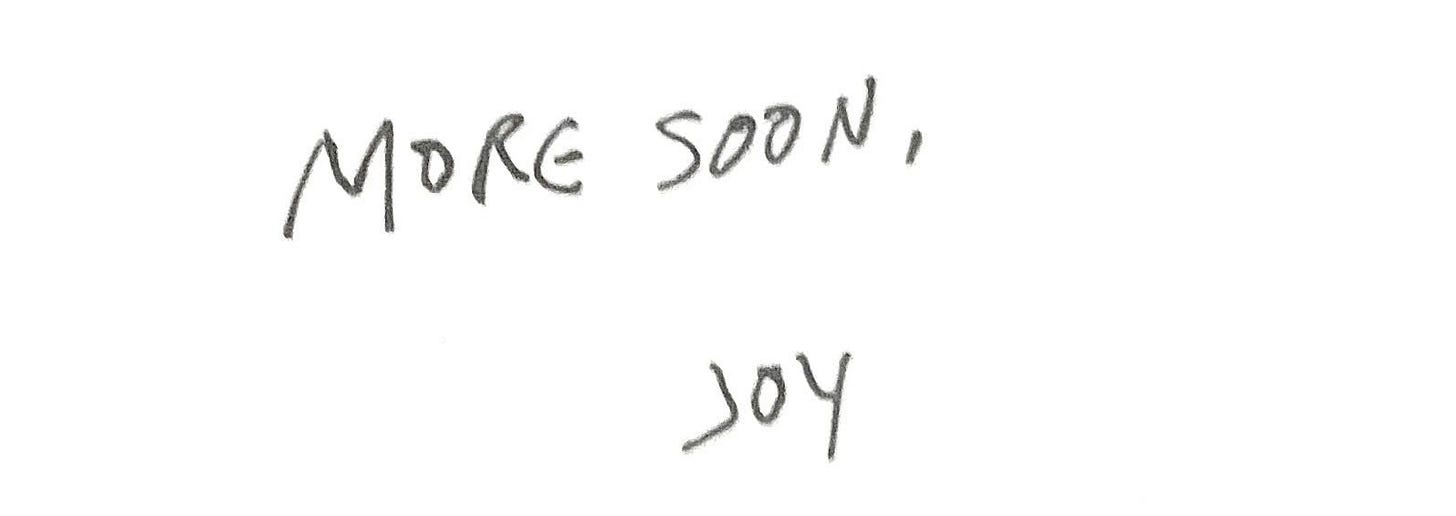Confession:
I want to feel beautiful. I want to feel GOOD.
And I want to see an image of myself and feel both of these things—deeply, in my body, without a doubt.
I want this truth for myself, for the people I love, and for the people I’m privileged to photograph.
More than anything, I want beautiful and GOOD to be malleable.
I want them to shift and change as often as we do.
I want beautiful and good to be things I can still see no matter how old I get, how soft I become, or how slow I start to move.
I want them to be facts I come to know and memorize—
the first thing I think of, and the first thing I say out loud
when a friend shows me a photo they just snapped of me
when I wasn’t paying attention.
I want laughter to be part of it.
I want surrender.
I want ease.
I want the stakes to feel lower.
I want to see myself and be in awe of this phenomenon, again and again:
That I’ll never really be able to see what others see,
and others will never be able to see what I see.
And isn’t that remarkable?
Dear Reader,
I may not have credentials in neuroscience or psychology, but I know—deep in my bones—that seeing myself is hard.
This hardness often shapeshifts quickly, transmuting into shock, confusion, and judgment. Before I can even count to three, the moment I come into contact with a reflection of myself, the hardness becomes something else entirely: an image so absurd, so beyond reason, that I begin to believe in a different story about myself than the one actually being reflected back.
If I were to put a name to this image, I would call it: BAD.
This word—this feeling, this experience of BAD—is deeper, wider, more complex than it appears on the page or screen you’re reading this now.
BAD happens in a flash.
BAD arrives like fact. Seemingly permanent, like initials etched into cement—a presence that could be removed, but not easily. Not unless I take a sledgehammer to the surface and create one giant mess.
And then what?
BAD can be a stand-in for so many things.
But it’s also the most common word I hear when people describe to me how they too feel when looking at a photograph they don’t like of themselves.
“Oh that’s a bad picture of me.”
“Ugh! Please don’t post that photo, I look so BAD!”
It shouldn’t take a rocket scientist-or even a photographer for that matter-to grasp that BAD can be shorthand for many things including: fat, awkward, or simply...different than expected.
I want to take one giant pause here to emphasize that last one-different than expected-and propose that maybe this is the only aspect of someone else’s perception (or even my own) that I can possibly influence. Even just a little.
When I look at these photos that Joy took, I can tell that I’m definitely on my way to figuring it out. As someone who typically moves fast once I know what I want, I’m giving myself space to slow down. Whatever the next steps are on my gender journey, I want to take my time. Let myself be in process, messy, unfinished. Which to me is also very queer.
-
, Notes From My Gender JourneyThe more I make pictures-of myself or of others-the more I begin to realize: I am in the work of exposure therapy. I am helping people see themselves in new ways, over and over again.
What’s wild to me is that no particular credential is really required for this kind of work. You can do it for yourself or a friend at any moment-just hold up your phone, snap a photo, and show it to them immediately.
But who you do this with will shape the entire experience.
If I could send a message out to the masses on this topic, I would scream point-blank:
YOU ARE NOT ALONE. YOU ARE NOT CRAZY, SEEING YOURSELF IS HARD-NO MATTER HOW MANY TIMES YOU’VE DONE IT.
The minute I enter into a space with someone I am trying to shatter the glass between us-so we can actually see each other and feel safe. Naming this phenomenon out loud is one way to close the gap between photographer and subject.
Over the years, I’ve shifted my focus away from trying to make the best image of someone, and toward creating the best possible experience around the image-making itself.
Because the big secret is: Your perception of yourself is influenced not by what you see, but how you feel about what you think you already know.
Our self-perception isn’t just a reaction to the visual facts of an image-it’s a reaction filtered through a preexisting emotional narrative that we carry about ourselves. And so even if the photograph is “good”, it can still feel BAD if it contradicts (or confirms) a belief we already hold.
In other words: The photograph becomes a mirror not just of how you look, but of how you feel about yourself.
As it turns out, getting these portraits taken by Joy was part of the process of re-building home and belonging in my own skin — not something to do once I found my way back. Practicing is part of what creates new pathways, I keep remembering.
-
, To Be KnownSometimes the feeling that comes up for me when I see a photo of myself has nothing to do with how I look—and everything to do with how it felt to be seen in that moment. Maybe I was caught off guard. Maybe I had a headache. Maybe I was simply afraid of what the picture might look like later—and now that it’s later, my prophecy has been fulfilled: I hate it. Please delete it off the camera roll immediately.
I forget sometimes that this is something that takes up real space in my mind. That I’ve actually done a lot of practice around this—with myself, and with others. I forget that not everyone knows this is a thing you can work with. That this whole phenomenon of self-perception is actually something that can be fucked with.
You do not need to change your body. You don’t need to change your hair. You don’t need to become a professional model in order to like a photo of yourself. And actually, liking the photo doesn’t even have to be the goal. You can just start by getting to know the image. Let it sit next to you for a while. Let it be strange and weird. Let it be unfamiliar. But maybe let it be yours before you decide whether it’s good or bad.
Exposure therapy is a process. It can feel dangerous at the beginning—when the feelings bubble up and you’re trying to do something new with them instead of shutting them down or slapping a label on them. Being curious about the different versions of yourself that you come into contact with is simple, but it’s not easy.
Joy documented me in this vulnerable moment. While my body may change, my scars may fade, and hopefully, I will have the privilege to continue to age–I will always know exactly what I looked like at that moment in time. I will always be able to look back at these photos and reflect on the care I received. I will bask in the gratitude of top surgery giving me access to the gender experience that allows me to move through the world with more internal ease. That internal ease gives me more capacity to give. Documenting this moment will always remind me of where I was, where I came from, and those who helped me reach that very moment.
, They Changed My LifeExposing yourself to various versions you are unfamiliar with is uncomfortable. You might have to grieve who you thought you were. Who you hoped to become but maybe never will. You have to come to terms with the body that exists now, the face that exists now, the expressions you’ve never really seen before in this particular way. And might I remind you: when you look in the mirror, it’s only a reflection. Everyone else sees the literal opposite.
Recently I switched the setting on Zoom so my image wouldn’t be mirrored—just to see what other people see when they look at me in real time. The first time I did it, I laughed out of sheer discomfort. Though it wasn’t the first time I’d seen a non-mirrored image of myself, I’d be lying if I said the sensation in my body was anything close to calm or acceptance. I had to pause. I stared. I turned my head left and right, slowly.
In 2020, like a lot of people, I started dancing on the internet. First in private. Then slowly, over time, I started posting the videos. I didn’t tell anyone this was my version of exposure therapy. That by putting moving images of myself into the world, I was declaring something quietly and clearly:
YES, this body exists. It moves this way and sometimes it moves that way. I am familiar with this body. I accept this body.
I’d be lying if I said my observations at times have not lead me down the path of obsessive compulsions to change or alter my body. Sometimes my thoughts were as innocent as “I need a haircut” and ranged all the way to “I’ve gained weight. This is upsetting.” But whether I think I should wash my face, shed a few pounds or peruse major surgery, isn’t the point.
The goal isn’t to not change, the goal is to practice seeing and really seeing. And to remember that at any given time, we don’t truly know what we look like. Our perception is relative. Based on feelings that change with the tide and our literal moon cycle. And this constant change is worth noting, worth remembering, before we etch stories into concrete slabs that say we are broken.
We embody this degree of reflection by slowing down, by practicing, by not looking away. As with any therapeutic process: courage and curiosity are key.
Some people argue we were never meant to see ourselves as much as we do now. Maybe that’s true. But I’m less interested in that idea, and more interested in the truth of where we are. And as an image maker, I don’t necessarily want to see myself less. I want to stay curious about the reactions that come up when I do.
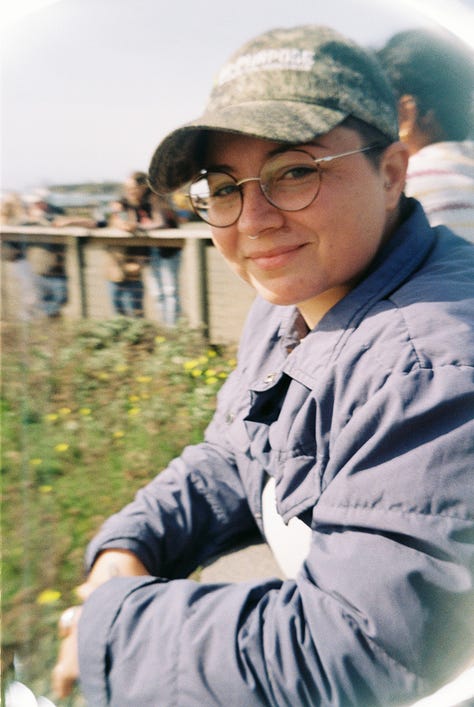
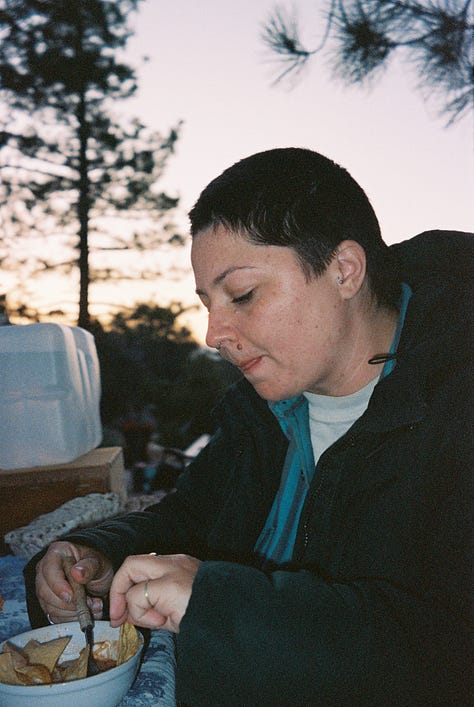
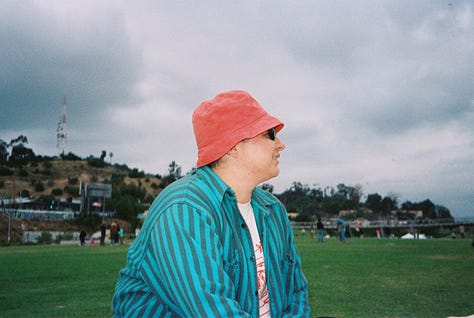
📍upcoming travel: Between August 18th–25th, I’ll be traveling down the California coast from Point Arena to Los Angeles. I’m looking for places to stay along the way — in exchange, I’d love to offer a portrait to anyone who hosts me. If you’d like to hire me for a full photo session or an Embodied Portrait experience during that time, I’m also booking sessions at a discounted travel rate. You can reach me by responding to this letter or e-mail me hello@joy-newell.com with your dream or idea. Learn more at www.trulyspectacular.world.
I can’t stop listening to NTS radio. AMBIENT ABRACADABRA W/ SOFIE BIRCH was today’s set playing in the background as I typed this letter. Something about listening to a human being’s curation instead of the algorithm on Spotify is bring my nervous system a lot of comfort.
I’m currently logged off Instagram until August as part of the Tune Out, Drop In challenge hosted by
Today is day 7.It’s also my half-birthday, and the six-month anniversary of the Los Angeles fires. I’ve been thinking a lot about the way that platform shapes our relationship to the news—and to our nervous systems. One of the biggest motivations for stepping away was reflecting on my own mental health since the fires. I’ve been reconsidering how I, as an artist and human, want to show up online, especially in moments of crisis. There’s that old phrase: Put your own oxygen mask on first and I’m really leaning into that lesson right now as someone who does eventually plan on returning.
Today marks eight months off cigarettes and 37 days of being nicotine free. I am happy to report that quitting was worth it.



